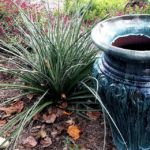July is a good month to prune “bleeder” trees, such as maples, dogwood, elm, birch and other trees that bleed when pruned in winter.
July #4 (Outdoor)
July #3 (Outdoor)
Raise the height of your mower to reduce stress on your lawn and to conserve moisture in the ground. For best results, mow 2 inches for Bermuda grass, 1-2 inches…
July #2 (Outdoor)
Start planning your fall vegetable garden. Late July is the time to start seeding your winter broccoli, cabbage, cauliflower, and Brussel sprouts to be transplanted into the garden in mid-August.
July #1 (Outdoor)
Layering easily propagates many plants. Hydrangeas, viburnums, weigela, trumpet honeysuckle, Carolina jessamine, and climbing roses are a few plants that will root if tlhe stems are fastened down and covered…
Say Howdy to This Plant from the Wild West
June #11 (Outdoor)
Summer solstice is the longest day of the year and the first day of summer. Pay tribute to the sun by enjoying the long day.
June #10 (Outdoor)
Bats can be an effective way to control insects. One big brown bat can eat 3,000 to 7,000 insects each night. Attract bats by building and placing bat houses in…
June #9 (Outdoor)
Keep an eye on plants like yarrow, asters, azaleas, coreopsis, dogwoods, euonymous, gaillardia, gerbera daisy, honeysuckle, hydrangea, lilac, monarda, phlox, pulmonaria, roses, rudbeckia, scabiosa, spirea, verbena and zinnias for powdery…
June #9 (Outdoor)
Powdery mildew is also more likely to be a problem when we are receiving abundant rainfall.
June #9 (Outdoor)
Be on the lookout for mosquitoes! With all of the rain we are having, these pesky insects are sure to be in abundance. Keep plant saucers, buckets, trash cans and…
